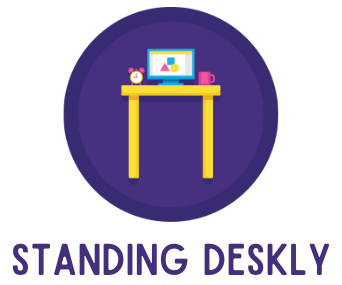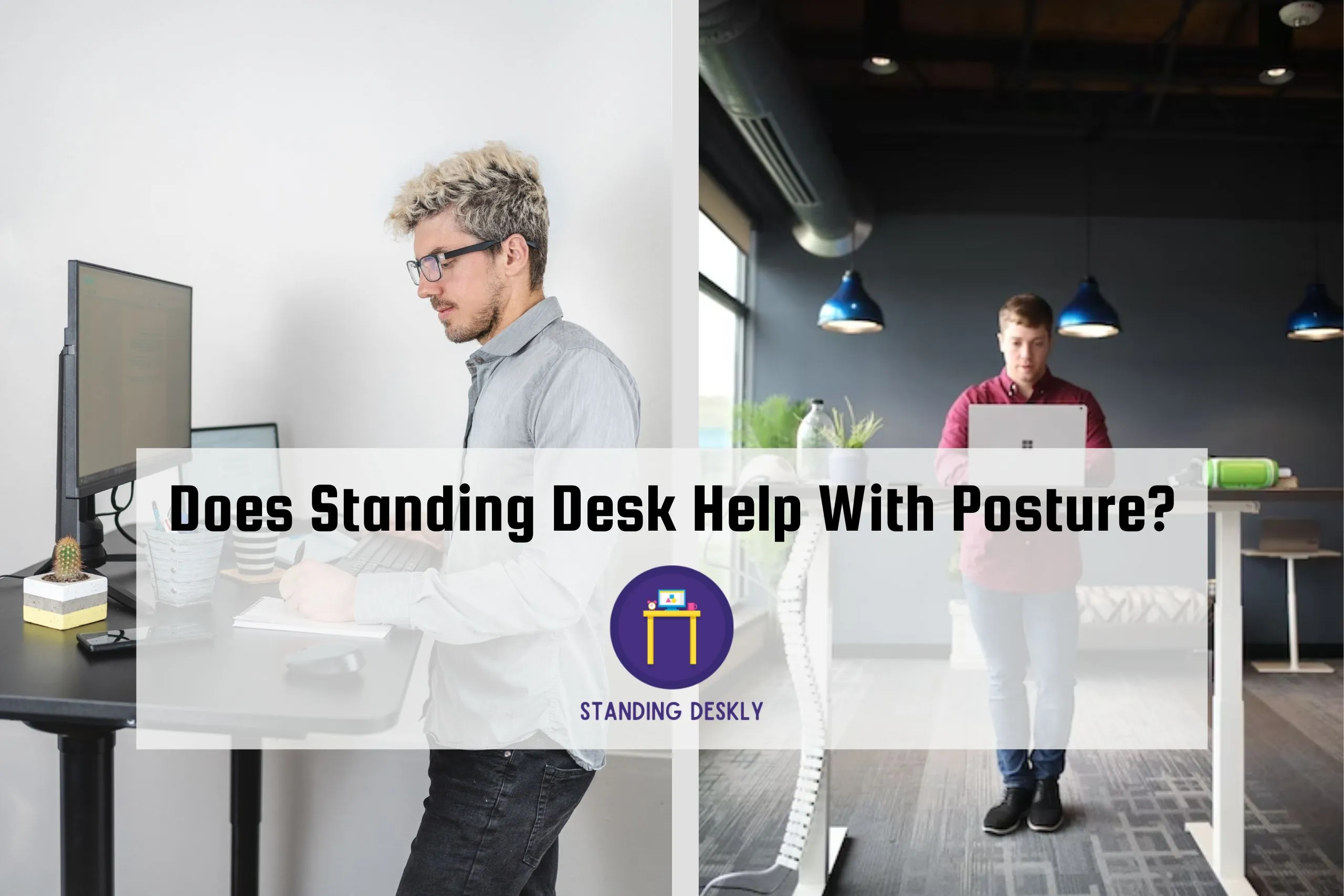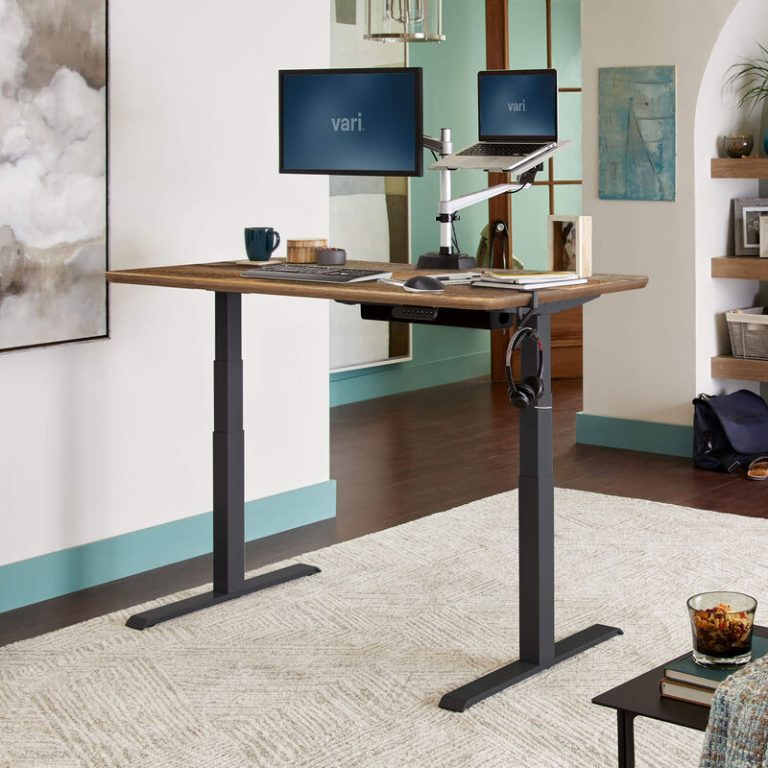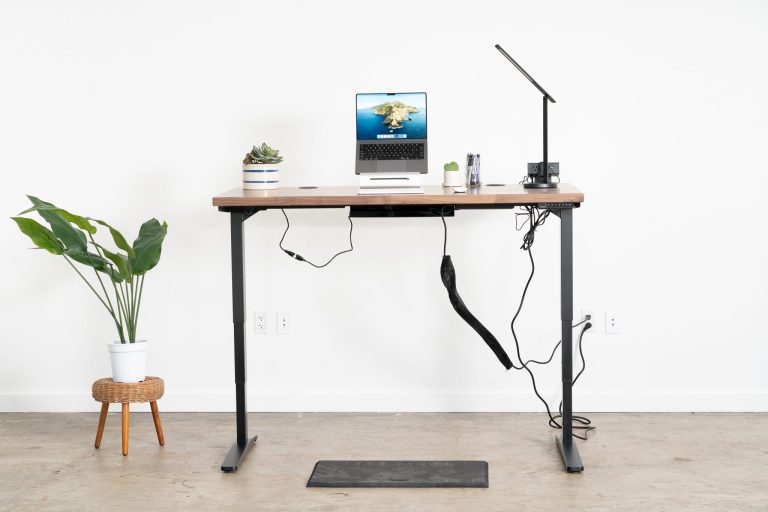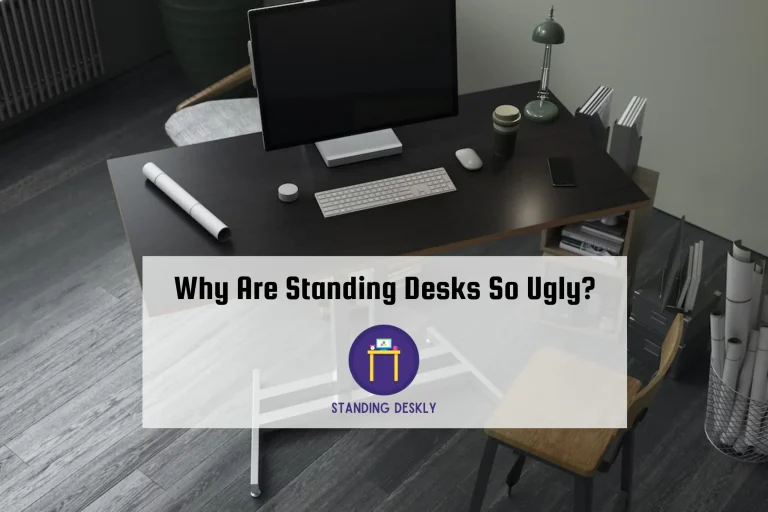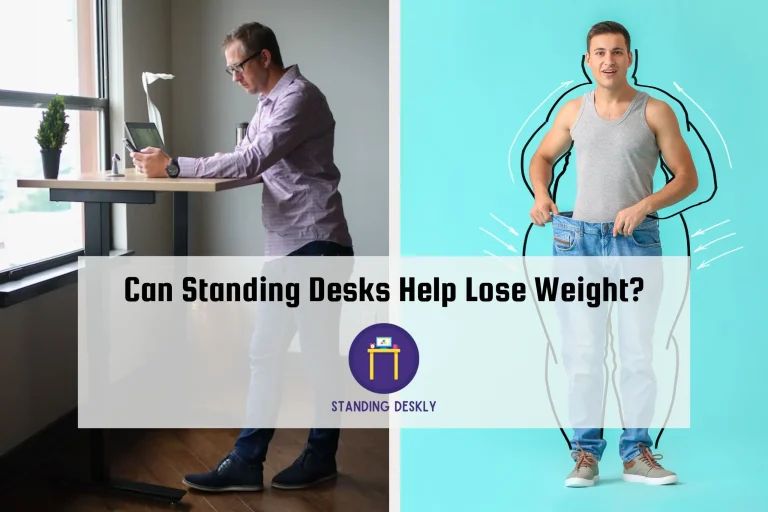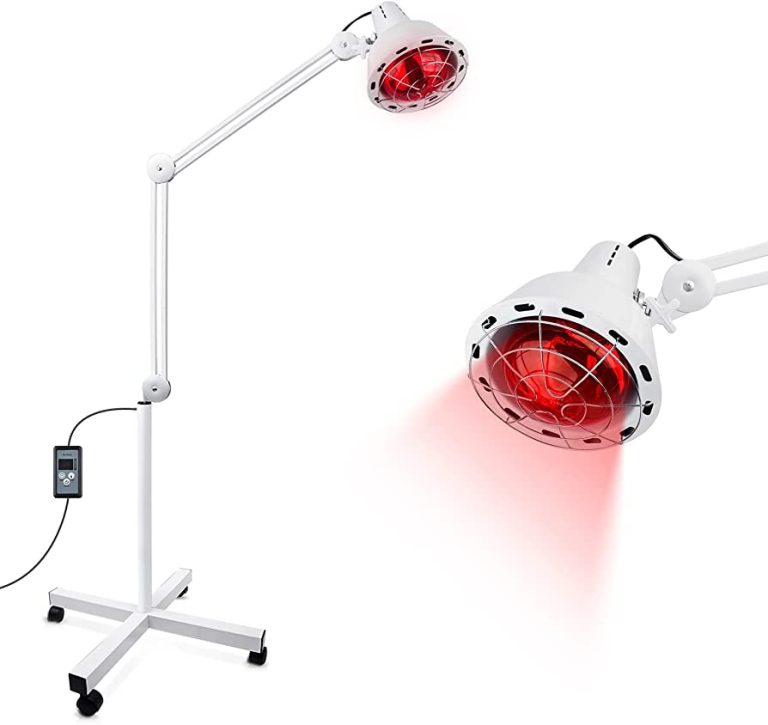Does Standing Desk Help With Posture?
The answer is yes. A standing desk can help your posture by making you stand up straighter and giving you a more comfortable place to work.
In this article, I’ll discuss how standing desks help with posture, provide tips on how to improve your posture while using one, and explore if standing is truly better for your posture than sitting.
How Standing Desks Help Posture?
Using a standing desk can have a positive impact on your posture. By setting up an adjustable-height desk, you can easily switch between sitting and standing throughout the day. This can help reduce the strain that prolonged sitting has on your neck, back, and shoulders.
In addition, when you stand, your core is automatically engaged, which helps to keep you upright and maintain good posture.
When using a standing desk for posture improvement, it’s important to make sure that your workspace is ergonomically set up for success. Your monitor should be at eye level, as well as your keyboard and mouse, if you use one. Your feet should be flat on the floor with your thighs parallel to it, and your arms should be held slightly bent when typing or using other equipment like a mouse or tablet.
If you find that standing for long periods of time causes discomfort in your feet or legs, consider investing in an anti-fatigue mat or standing desk converter that’s designed to provide cushioning and support while working.
Also pay attention to how you stand; try not to lean too far forward or backward when at the desk — instead keep yourself balanced with your weight evenly distributed between both feet. You can also use a lumbar support cushion placed against the small of your back to help improve posture while standing.
Finally, ensure that you take regular breaks throughout the day so that your body gets used to alternating between sitting and standing positions — this will help prevent fatigue from setting in.
Tips to Improve Posture at a Standing Desk
Improving your posture at a standing desk can be a challenge, especially if you’re used to sitting for most of the day. If you’re considering switching to a standing desk, it’s important to understand the basics of good posture. Proper posture can help reduce back pain, increase energy levels and focus, and even boost confidence. Here are some tips for improving your posture while using your standing desk:
- Keep your feet shoulder-width apart and evenly distribute your weight between both feet.
- Engage your core muscles by imagining that you have an imaginary belt around your waistline that you’re tightening up with each breath.
- Make sure your shoulders are relaxed and down away from your ears.
- Adjust the height of the desk so that when you stand with good posture, your elbows are slightly bent at 90 degrees and hovering above the desk surface.
- Stand straight but not stiff; keep a small arch in the lower back as if someone were gently pulling you up by the top of your head.
- Don’t forget to look away from the computer every so often; maintain eye contact with others or take a few minutes to look out the window or across the room.
- Move around frequently; break up long periods of standing with short walks or stretching exercises throughout the day.
Is standing better for posture than sitting?
Many experts believe that standing desks can improve posture. This is because when you stand, your spine is naturally kept in an upright and aligned position. Sitting for long periods of time can cause strain on the spine as it encourages a rounded back, which can lead to poor posture.
On the other hand, standing helps maintain proper alignment, reducing the risk of developing poor posture from being hunched over in a chair all day. Of course, this doesn’t mean that standing desks are always better than sitting desks; depending on how you use them and your own individual needs, one could be more beneficial than the other.
When choosing between sitting and standing desks, it’s important to consider how much you move throughout the day. If you’re able to get up regularly to stretch or take short walks throughout the day, then a sitting desk may be best for you.
However, if your job requires you to stay seated at a desk all day with minimal movement breaks, then standing could be beneficial in terms of maintaining better posture.
Another factor to consider is how comfortable you feel while working at either desk type. If you find yourself getting uncomfortable or feeling pain after prolonged periods of time in either position, then it may not be suitable for your body type or lifestyle.
It’s also important to pay attention to ergonomics when using either desk type – make sure your arms and legs are supported correctly so that your body stays in proper alignment while working.
Finally, there’s no definitive answer as to which is better for posture – sitting or standing – since everyone’s individual needs vary greatly when it comes to ergonomic comfort levels and movement requirements throughout their workday. Ultimately, finding out what works best for you will come down to trial and error – so don’t be afraid to experiment with different combinations until you find what works right for you!
Conclusion
In conclusion, standing desks can be a great help for those looking to improve their posture. Standing is preferable to sitting because it helps keep the spine aligned and strengthens the core muscles. A few tips can make it easier to use a standing desk, like making sure the monitor is in the right place and switching between standing and sitting throughout the day. All in all, adding a standing desk to your workspace may be just what you need to improve your posture!
Hey there!
I hope you’re enjoying the article you’re reading! I value your feedback and would love to hear your thoughts on how to improve it. If you have any suggestions, please feel free to send an email at editorial@standingdeskly.com along with the article URL.
Thank you for taking the time to help me improve my content. Your suggestions are greatly appreciated!

I’m the author and developer of Standingdeskly, the go-to site for standing desk enthusiasts. I provide comprehensive reviews of standing desks along with office setup tips. Combining years of research and personal experience, our goal is to make it easy for you to find the perfect standing desk tailored to your needs.
